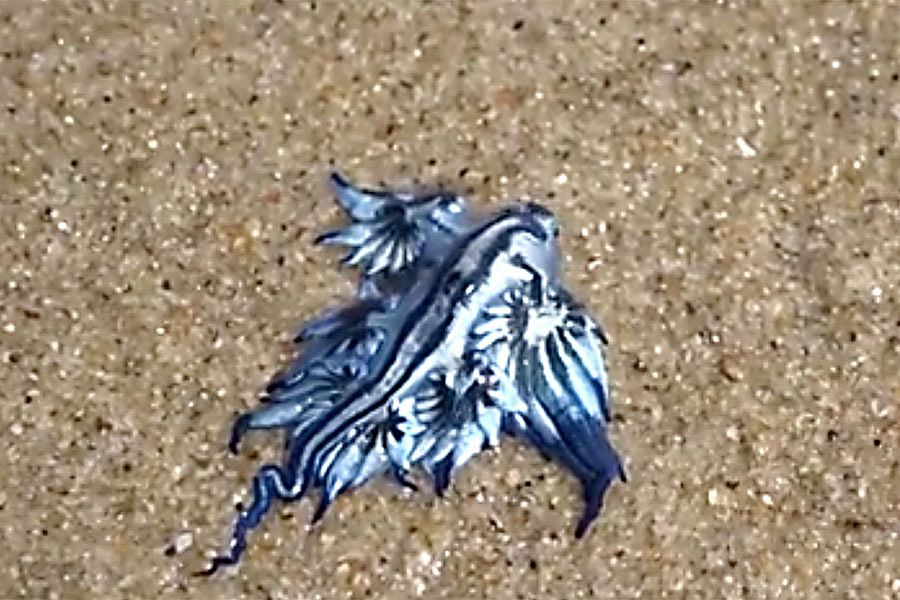'Blue dragon' washes ashore in Australia. Where did it come from?
Loading...
Sure, it was a sea slug that washed ashore Australia's Gold Coast last week, and dragons are still as fictional as unicorns, but "blue dragon" is a worthy nickname for so unusual a creature.
Beach-goer Lucinda Fry captured the blue dragon on video, catching it while it was most likely hunting for food, and posted her find to the Gold Coast Bulletin's Facebook page, providing an up-close look at a rarely-seen creature.
Known to biologists as Glaucus atlanticus, blue dragons are a species of nudibranch sea slug that swim most tropical and temperate oceans the world over, following food. The majority of nudibranches – that is, soft-bodied gastropod mollusks – prefer skimming the ocean floor, but the species known as "blue dragon" hunts closer to the surface, floating upside-down to leverage the surface tension of the water, effectively hitching a ride on the ocean's currents.
Those currents inevitably lead to some blue dragons washing ashore as happened last week. But for the most part, they bring them to the tendrils of Portuguese man o' war – the dragons' favorite food, and a polyp that tends to float off the east coast of Australia by the thousands.
At this time of year, the polyps drift toward the Gold Coast by easterly winds, with blue dragons trailing.
Feeding on Portuguese man o' war, or blue bottles as they are also known, blue dragons absorb the sting of the fearsome jellyfish, de-weaponizing their prey while at the same time suiting themselves up; since once the toxic cells are absorbed into their own tissue, blue dragons are able to use the sting against their own predators.
“I have handled them before and wasn’t stung, but I would not recommend anyone pick them up because they can have a painful sting,” Griffith University marine invertebrates expert Kylie Pitt told Gold Coast Bulletin.
The stinging cells are not digested by the sea slug, instead they are stored in its cerata, the pointy whirled appendages that give the mollusk its dragon-like quality, since they look like wings. Because the toxins are absorbed in the cerata, the centimeter-long slugs have a more powerful sting than their larger prey, which can have tentacles that stretch an average of 30 feet, and a sting with the power to paralyze.
Even to an expert, Ms. Pitt acknowledged, blue dragons seem "really weird.”








